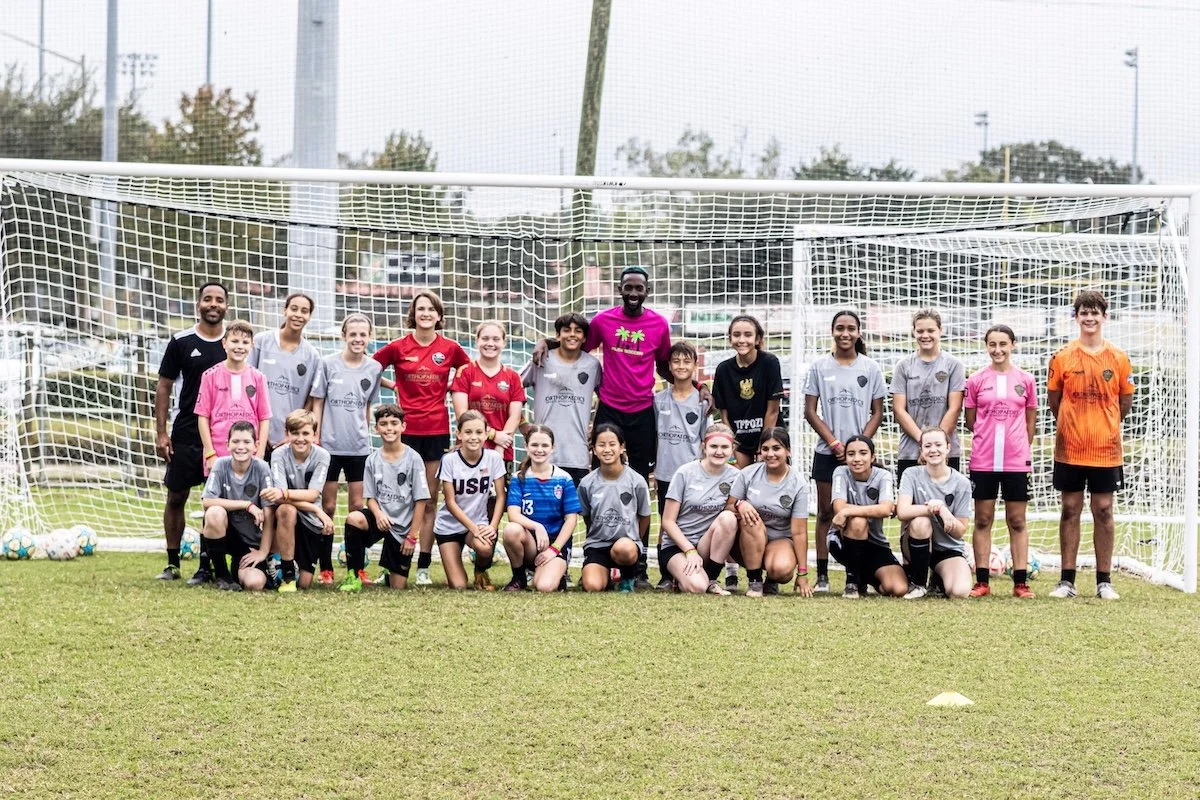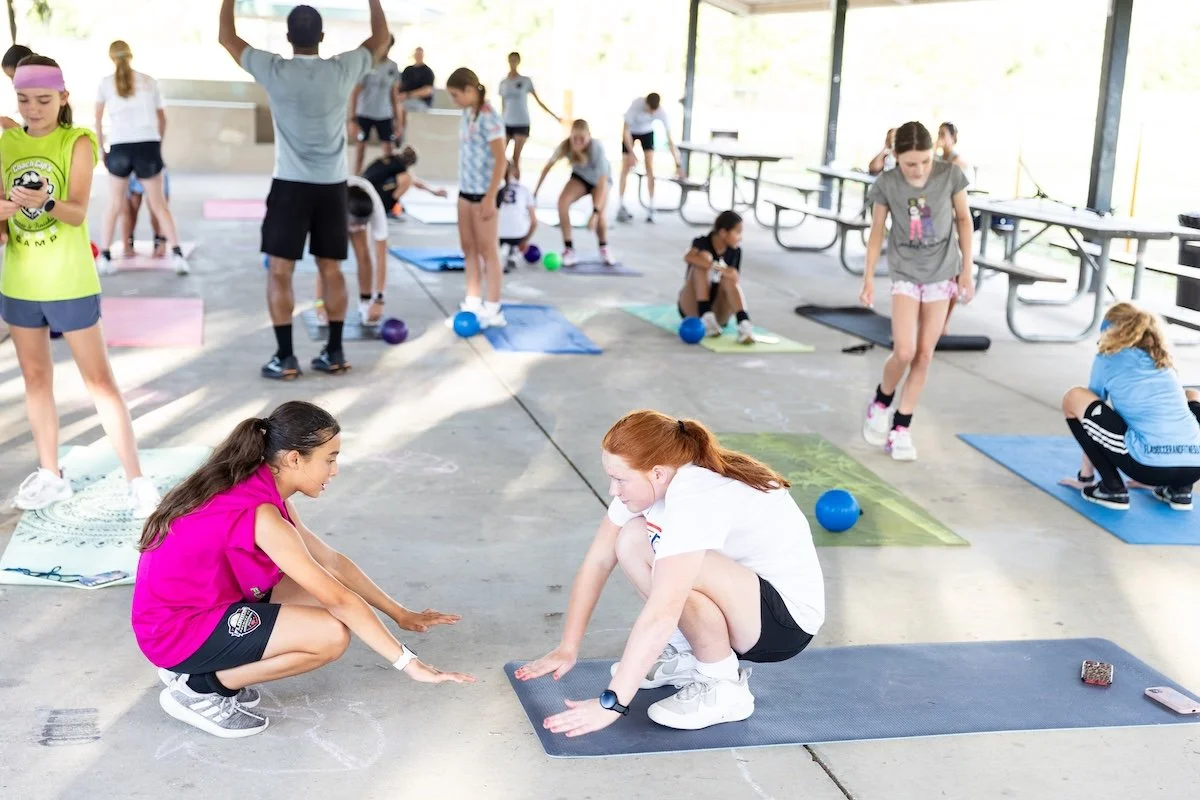Tampa Year 1: Turning the Field into a Lab
In 2022, WorkRate launched its first full-season pilot with Flex Soccer Academy in Tampa, Florida. It marked the beginning of a bold hypothesis: could clinical-grade diagnostics, real-world sprint testing, and athlete-guided learning systems actually thrive in a grassroots youth environment?
The answer, resoundingly, was yes. But not without invention, adaptation, and a few pairs of headphones playing steady beats into focused young ears.
What We Deployed
We weren’t just testing athletes—we were testing a system. Here’s what we brought to the field:
Athlete-Guided Movement Screen
To address timing gaps and staffing limitations, we built our first self-guided screening protocol, empowering athletes to assess joint mobility and movement readiness. This formed the backbone of our corrective logic—the first version deployed at team scale.
Sprint Diagnostic Protocols (30m)
Instead of importing pro benchmarks, we used actual in-game sprint data to define an appropriate test distance for this age and competition level. Laser speed traps gave us reliable metrics; our first data-informed sprint diagnostic was born.
Warm-Up Protocol 1.0
This was a major leap. Our first standard warm-up protocol blended biomechanical insight with neuromuscular retraining. Unlike generic templates, it was custom-built to match the movement profiles and force demands of modern soccer. A clear evolution beyond FIFA 11+, this protocol worked so well that its DNA still exists in today’s WorkRate systems.
Gait Training via Headphones
In this first iteration, athletes used headphones to listen to metronomic audio cues during threshold and tempo runs. This validated one of WorkRate’s core training beliefs: humans have a natural ability to sync movement with sound. The rhythmic feedback supported stride symmetry, pacing, and concentration—and laid the foundation for future sound-based RET development.
Sprint Development System
We trialed various sprint methodologies and speed tools, creating a repeatable training block that combined data, gait retraining, and mechanical feedback. The system saw early success during our Summer Speed Camp—with average sprint speed increasing by 6% in just six weeks.
Field Track & RET Foundations
We mapped physical constraints on the field—effectively building a controlled mini track to standardize running drills and diagnostics. It was the embryonic version of the Running Efficiency Test (RET) we now use across the WorkRate ecosystem.
What We Used
We leaned on accessible, high-quality tools to ensure everything was field-ready, repeatable, and measurable:
Laser Speed Traps → Objective measurement of 30m sprint performance
Polar H10 Heart Rate Monitors → Track physiological response to speed and training over time
Headphones → Deliver cadence cues for gait retraining
Field Track Markers → Spatial constraints for RET-style sessions
WorkRate App (v1) → Built and monitored by the team in Australia, hosted warm-up content, sprint logs, and daily athlete check-ins
What We Learned
We didn’t just validate a protocol—we validated a philosophy.
Systems are deployable at grassroots level. Even without lab infrastructure, we delivered clinical-grade insights with precision and clarity.
Learning matters. We saw that younger athletes absorb what they see as useful—especially when we involved them in the “why,” not just the “how.”
Autonomy emerged. Athletes didn’t just perform the protocols—they self-organized. They adjusted on the field, executed warm-ups without prompting, and owned their routines.
Gait retraining via sound worked. Headphone-based cues improved soccer-specific running performance, validating the body’s ability to entrain with rhythm—a key mechanism in optimizing gait timing and mechanics.
High-speed running capacity improved. Our sprint camp led to measurable performance gains, and players showed superior speed capacity compared to peers during the season.
The Takeaway
Year 1 in Tampa gave us more than data. It gave us proof that WorkRate could meet athletes where they are—in cleats, on turf, mid-season—and still raise the ceiling.
It showed us that with the right tools, diagnostics could become part of the game, not separate from it. That grassroots athletes don’t need less science—they need better delivery. That autonomy is coachable. And that real learning—at any age—comes from trust, feedback, and clear outcomes.
From app-based screening to sound-driven gait training, Tampa was the beginning. The field became the lab. The players became the process. And WorkRate became a system worth scaling.



